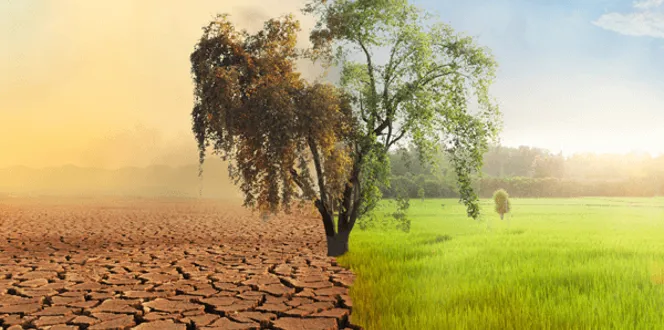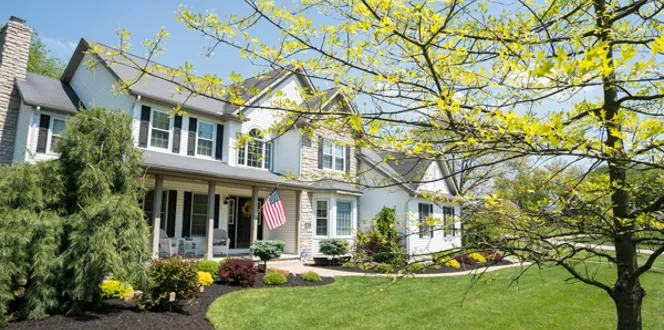Regrowth, rebirth, and renewal: Yes, spring is finally here. I see pockets of fresh, green grass expanding across my lawn. I smell lingering raindrops in the air. And I hear bees buzz, beetles click, and birds chirp in my landscape.
My patio, now swept clean of winter's debris, provides me with the perfect view of my backyard. There, I settle into my favorite reclining lawn chair in a deep state of meditation, staring into the depths of the forest at the edge of the lot.
My focus shifts to the giant, seemingly ancient oak tree that stands tall slightly to the left of the area where a childhood jungle gym once stood. I imagine the tire swing that once swayed gently in the breeze from its largest branch, as well as the excitement I felt each spring when I could freely play outside and enjoy the fresh air until dusk.
There's something about that tree, the gentle giant in your landscape that has been there longer than anything else in the neighborhood. It's been there longer than the houses, the perfectly manicured lawns, the beds of overflowing annuals and even the nests of creatures that make homes in that tree's sturdy branches.
It was the first tree you climbed. It has a sturdy "arm" that held your tire swing. That tree was the backdrop in every family photo, providing shade for picnics and serving as a natural cathedral for a relative's wedding.
We Benefit From Trees In So Many Ways - Economically, Environmentally And Socially.
"Trees truly make our lives better," says Davey expert and ISA Board Certified Master Arborist R.J. Laverne. "They make history for families richer, and our children will remember us by the trees we plant. They are truly magnificent, and if we keep them healthy, we can enjoy the environmental, economic and amazing social benefits of having trees in our cities."
Breathe Easy, City Dwellers.
Thanks to our trees, we can take a nice, deep breath of clean air. Trees replace the carbon dioxide in our stuffy, urban world into fresh oxygen so we can fill up our bodies with life and thrive. Really, trees are like nature's respirators. They give us that essential element.
Actually, 1 acre of forest absorbs 6 tons of carbon dioxide and puts out 4 tons of oxygen, which is enough to meet the annual needs of 18 people, according to the U.S. Department of Agriculture.
If purifying the air wasn't enough, our trees benefit the water in our atmosphere by slowing rain impact so the soil can better absorb the moisture. "If we simply had pavement instead of trees, that water would run off into sewers, and we'd have higher incidents of flooding, especially for communities around streams," Laverne says.
Meanwhile, those tree roots keep soil in place and reduce erosion, which can be a real problem on slopes. Reducing erosion improves water quality by preventing dirt and debris from entering our streams.
Seeing 'Green.'
Tree shade is the cheapest air conditioning around, and it's the cleanest form of cooling you can get. Tree shade keeps buildings cool in summer, so you can stop turning down that thermostat. "That results in lower electric bills," Laverne points out. Plus, less utility reliance means fewer emissions, "and that's a good thing," he adds.
In fact, the net cooling effect of a young, healthy tree is equivalent to 10 room-size air conditioners operating 20 hours per day, according to research from the U.S. Department of Agriculture. "If you plant a tree today on the west side of your home, in five years your energy bills should be 3 percent less. In 15 years, the savings will be nearly 12 percent," according to Dr. E. Greg McPherson of the Center for Urban Forest Research.
Of course, the primary economic benefit most of us think of when we invest in planting new trees is our property value. Landscaping adds more value to a home than any other renovation. For every $1 you invest in your landscaping, you can expect up to $1.35 in increased property value according to a study by Texas Tech University. "It's a direct financial benefit," Laverne confirms.
And nothing creates curb appeal like a mature tree-one with grand, outstretched branches that welcome visitors, a full show of leaves that creates a natural canopy and character that hints at a rich history.
Isn't it time you plant a tree today? Meanwhile, in our cities, the Arbor Day Foundation notes how trees can stimulate economic development, attract new businesses and drive tourism. Commercial retail areas are more attractive to shoppers, apartments rent more quickly, tenants stay longer, and space in a wooded setting is more valuable to sell or rent.
"Indeed," Laverne says, "the trees in our urban forest are truly valuable from an economic, environmental and social standpoint."





